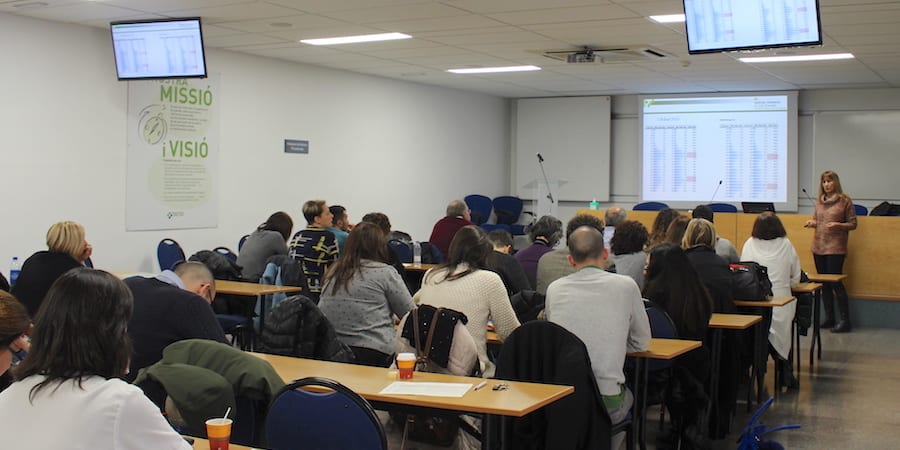
Teaching lean management: current and future state
INTERVIEW – Making lean thinking a bigger part of our university programs and education is the only way to ensure the methodology really comes to permeate our societies. But how can we ensure lean is taught in a way that makes sense?
Interviewee: Peter Ward, Senior Associate Dean for Faculty and Outreach, Fisher College of Business at Ohio State University
Interview by: Roberto Priolo, Editor, Planet Lean
Main photo (above) by: Jannis Tobias Werner / Shutterstock.com
Roberto Priolo: Lean is largely about on-the-job learning and experiments, whereas universities are largely perceived as institutions that predominantly teach theory. How does that add up?
Peter Ward: Out of context, lean is pretty meaningless. It is only when we apply it to the work that it acquires substance. Yet, somehow we always struggle to find ways to make it real for students. The challenge for universities is to find clever ways to bring the gemba to the classroom, and to take students from the classroom to gemba. Having said that, it is also where the fun is!
RP: I would assume a way to “make it real” for students is to involve organizations?
PW: Indeed, there is enormous potential there – but there is work to be done on both sides to make collaboration less challenging. Universities are often quite difficult to work with and, as institutions, they have to become more agile. At the same time, companies need to understand it is in their interest to work with universities and they need to be more patient and recognize the takt time is different.
There is also a problem with incentives. An individual faculty member is motivated to develop a lean curriculum and to learn about lean deeply only by the fact that he or she has an intrinsic interest in the subject. The idea that the university itself might benefit financially is much less compelling to an academic, and that’s why it is sometimes hard to get them interested and involved.
I also think that universities should be more open to bringing practitioners into the faculty, even if it is for a short period of time. Having executives share their knowledge while learning more about how the university works has great benefits. Higher education institutions currently don’t have good mechanism to embrace these people when they come in – in fact, the system tends to reject them. On their part, companies are reluctant to give up talent, so that’s where we need to get better.
RP: When it comes to teaching lean in universities, what is the real problem we aim to solve? What’s the gap between current and future state?
PW: It is the amount of time we need to develop a competent lean leader in a company. It takes years, and universities should work hard to find ways to shorten that lead-time. We can begin to work towards that when we teach undergraduates in universities, but it is equally important to provide education to people who are already working, which should of course be supplemented with on-the-job training.
RP: Is there a risk that, should the number of universities teaching lean grow, the lean message might become diluted and not quite as pure?
PW: It is certainly a risk, and that’s why we need to establish some sort of canon of lean thinking. To some extent, we already have it: The Machine that Changed the World and the work published by the Lean Enterprise Institute and others have clearly contributed to the creation of a common language we all understand. However, if we want to teach it in universities without losing the thread, we have to put it in textbooks and make it accessible to all. We need to make sure we are not developing courses that say they teach lean, when in fact they don’t (we already see some consultants say they facilitate lean, when they really don’t). In essence, we need some agreement on what the fundamentals of lean are and a recognized source that people can go to that will reinforce the message.
RP: How can we facilitate the integration between university learning and on-the-job training? Do government programs have a role to play?
PW: We currently have a lot of programs that are heavily subsidized by governments. They largely focus on teaching tools, when – in my opinion – they should concentrate on teaching people problem-solving skills. If we think of the problems we face as societal problems (same for the benefits), I think governments can certainly help.
We already teach problem solving in elementary schools and high schools, but it is too abstract and too many students are left behind. We can, and should, get much better at teaching problem solving. If you become a problem solver in school, lean will become much, much easier to understand and embrace. Instilling problem solving capabilities in people from a very young age (much earlier than university) has huge potential – at that point, it would not only be companies benefitting, but entire societies.
RP: Don’t you think that in order to properly teach lean universities should become leaner themselves?
PW: There is indeed a lot of waste involved in university processes – think of all the norms, restrictions and bureaucracy – but I believe we can already get the job done. Universities certainly have to change, but it is a poor excuse to say we can’t do anything until they do. In fact, we need to start now. There are obstacles, but there is a lot that motivated faculty members can do. It’s going to take years before universities change, and we cannot afford to wait.
RP: What would you like to see in terms of lean teaching? What’s the ideal state you envision?
PW: We would learn about lean throughout our careers. I would like to see a system where at different stages of our career we can go back to school and learn what we need, on-demand. At the moment, we are batching students and learning, which sadly means that people also tend to forget in batches. It would be preferable to have shorter intervals of intense classroom-gemba learning, and more learning throughout our lives whenever we need it. Our needs change over time, and we should be able to pull what we need when we need it, with the fundamentals being taught early on.
THE INTERVIEWEE

Read more


FEATURE – By bringing organizations together to regularly share updates on their lean journeys, Instituto Lean Management has managed to create a flourishing lean healthcare community in Catalunya. But hospitals aren't the only ones benefitting.


FEATURE – Why is lean change so hard to achieve in times of plenty? And why does it seem to be more attainable when chaos reigns? The author tries to answer these questions.


FEATURE – A lean coach from Argentina reflects on the transformations he has supported across Latin America and on why lean can help unlock the potential of the continent.


FEATURE – How can digital companies develop a competitive edge in the "tech first" future? By using Lean Thinking to ensure continuous learning and transform the way coders think and work.

